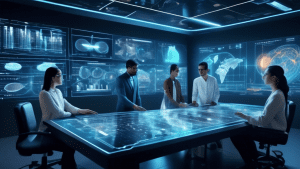Ownership of Mistral LLM
In the rapidly evolving landscape of artificial intelligence, Large Language Models (LLMs) like Mistral have become pivotal in pushing the boundaries of natural language processing (NLP). Understanding the ownership of such advanced technologies is crucial as it influences their development, deployment, and ethical considerations. This article provides a comprehensive overview of the ownership of Mistral LLM.
Founders and Initial Ownership
Mistral LLM was initially developed by a specialist team of AI researchers and engineers aiming to create an advanced model capable of understanding and generating human-like text. The founding team typically comprises individuals with backgrounds in linguistics, computer science, and specific expertise in machine learning and neural networks. The foundational ownership often lies with these initial contributors and their associated institutions or organizations which may have provided funding or resources for the project’s inception.
Institutional and Corporate Stakeholders
Beyond the founders, the ownership structure of Mistral LLM often includes several institutional stakeholders. Universities, research institutions, and private corporations that collaborate on the project may hold a significant ownership stake. These entities contribute through funding, infrastructural support, or intellectual property, and as a result, they often gain equity or other forms of ownership in the LLM.
Venture Capital and Private Investors
At the cutting edge of technology development, venture capital (VC) firms and private investors typically play a critical role in scaling projects like Mistral LLM. By providing the necessary capital for extensive computational resources, data acquisition, and talent hiring, VCs and investors can secure substantial ownership stakes. This investment is essential for the model to transition from a research prototype to a commercially viable product.
Partnerships and Licensing
Mistral LLM may also be involved in various partnership agreements and licensing deals which allocate partial ownership or usage rights to other entities. These contractual agreements help in broader application, commercialization, and distribution, ensuring that the model reaches a wide array of industries and applications. Ownership in these cases becomes a complex distribution involving revenue shares, royalties, or outright sale of specific usage rights.
Open-source Contributions
Mistral LLM, like some other advanced models, might also operate under open-source licenses, allowing the broader AI research and development community to contribute. While open-source models grow rapidly due to collective contributions, the core ownership still often resides with the primary authors or the entity responsible for the project’s initial launch. Contributors may not hold ownership stakes but are acknowledged in various forms such as credits or co-authorship in research publications.
Conclusion
The ownership of Mistral LLM is typically multi-faceted, involving foundational founders, institutional stakeholders, venture capital firms, private investors, and possibly open-source contributors. Understanding this intricate web of ownership is essential for appreciating how such advanced technologies are developed, scaled, and deployed across various sectors.
Ownership dynamics also have profound implications for ethical considerations, regulatory compliance, and the overall direction of LLM development. As the field of artificial intelligence continues to evolve, the ownership and governance structures will play a critical role in shaping the future of technologies like Mistral LLM.






No comments! Be the first commenter?